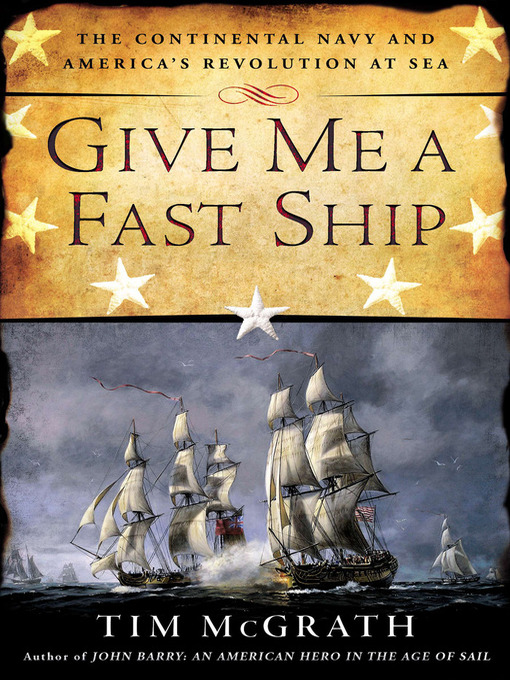- All Magazines
- Popular Magazines: Always Available
- Cooking and Food Magazines
- Craft Magazines
- News and Politics
- See all magazines collections
Give Me a Fast Ship
The Continental Navy and America's Revolution at Sea
America in 1775 was on the verge of revolution—or, more likely, disastrous defeat. After the bloodshed at Lexington and Concord, England's King George sent hundreds of ships westward to bottle up American harbors and prey on American shipping. Colonists had no force to defend their coastline and waterways until John Adams of Massachusetts proposed a bold solution: The Continental Congress should raise a navy.
The idea was mad. The Royal Navy was the mightiest floating arsenal in history, with a seemingly endless supply of vessels. More than a hundred of these were massive "ships of the line," bristling with up to a hundred high-powered cannon that could level a city. The British were confident that His Majesty's warships would quickly bring the rebellious colonials to their knees.
They were wrong. Beginning with five converted merchantmen, America's sailors became formidable warriors, matching their wits, skills, and courage against the best of the British fleet. Victories off American shores gave the patriots hope—victories led by captains such as John Barry, the fiery Irish-born giant; fearless Nicholas Biddle, who stared down an armed mutineer; and James Nicholson, the underachiever who finally redeemed himself with an inspiring display of coolness and bravery. Meanwhile, along the British coastline, daring raids by handsome, cocksure John Paul Jones and the "Dunkirk Pirate," Gustavus Conyngham—who was captured and sentenced to hang but tunneled under his cell and escaped to fight again—sent fear throughout England. The adventures of these men and others on both sides of the struggle rival anything from Horatio Hornblower or Lucky Jack Aubrey. In the end, these rebel sailors, from the quarterdeck to the forecastle, contributed greatly to American independence.
Meticulously researched and masterfully told, Give Me a Fast Ship is a rousing, epic tale of war on the high seas—and the definitive history of the American Navy during the Revolutionary War.
-
Creators
-
Publisher
-
Release date
July 1, 2014 -
Formats
-
OverDrive Listen audiobook
- ISBN: 9781469059792
- File size: 573462 KB
- Duration: 19:54:42
-
-
Languages
- English
-
Reviews
-
Publisher's Weekly
May 26, 2014
McGrath (John Barry: An American Hero in the Age of Sail) enhances his position among American Revolution naval war historians with this comprehensive, fast-paced account of the collection of armed merchantmen (non-naval vessel) manned by amateurs that took on the world’s greatest naval power. America’s Continental Navy was seriously overmatched by the British, yet in the spring of 1776 a Yankee squadron took two British forts in the Bahamas, returned home laden with military stores, and supported the U.S. Marine Corps in its first amphibious landing. By 1777 “the naval war was being taken to George III’s backyard,” as a Continental squadron “sent the mighty British Empire into fits of temper and hand-wringing.” As the war progressed, small ships had better survival odds than the more glamorous frigates that drew British attention they could not match. McGrath’s vivid treatment of the Continental Navy’s teething troubles highlights the contributions of such lesser-known captains as Gustavus Conyngham, Jack Barry, and Joshua Barney, usually overshadowed by the spectacular achievements of John Paul Jones. He also addresses financial troubles, desertions, and mutinies of those early years. McGrath demonstrates that, despite the crises that threatened to marginalize the Continental Navy, its fighting spirit and outrageous optimism began a tradition that endures. Maps.
-
Loading
Why is availability limited?
×Availability can change throughout the month based on the library's budget. You can still place a hold on the title, and your hold will be automatically filled as soon as the title is available again.
The Kindle Book format for this title is not supported on:
×Read-along ebook
×The OverDrive Read format of this ebook has professional narration that plays while you read in your browser. Learn more here.

